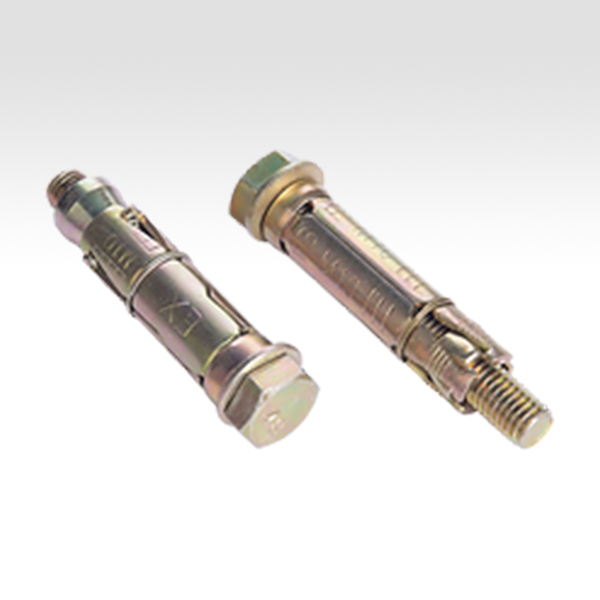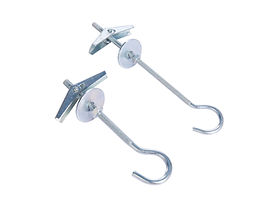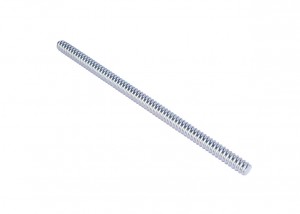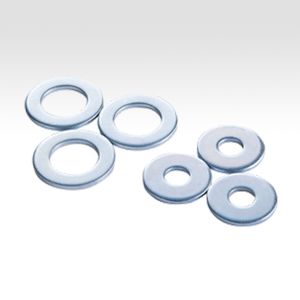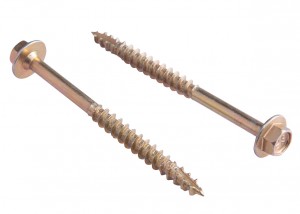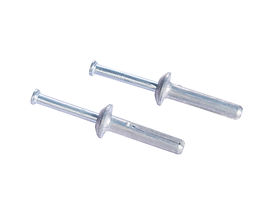Anchor bolts (anchors) for external thermal insulation are composed of expansion parts and expansion sleeves, or only consist of expansion sleeves. They rely on the frictional force or mechanical locking effect generated by expansion to connect the insulation system and the mechanical fasteners of the base wall.
In the installation of external thermal insulation boards, in order to make the system safer, various types of anchor bolts (anchors), metal brackets (or angle steel metal brackets) or connectors are often used according to the material or finish type of the thermal insulation board. measures to assist in strengthening.
The anchor bolt is used to fix the special mechanical connection fixing parts such as hot-dip galvanized welded wire mesh, alkali-resistant glass fiber mesh or thermal insulation board, and fire isolation belt to the base wall.
The anchor bolts should be made of steel grades with better plastic properties such as Q235 steel and Q345 steel, and high-strength steel should not be used. The anchor bolt is a non-standard part, and because of its large diameter, it is often made of unmachined round steel like a C-grade bolt, and is not processed by a high-precision lathe. Anchor bolts with exposed column feet often use double nuts to prevent loosening.



Anchors are of the following types:
(1) Expansion anchor bolt
Expansion anchor bolts, referred to as expansion bolts, use the relative movement of the cone and the expansion sheet (or expansion sleeve) to promote the expansion of the expansion sheet, generate expansion and extrusion force with the concrete on the hole wall, and generate pull-out resistance through shear friction. A component that realizes the anchoring of the connected piece. Expansion anchor bolts are divided into torque control type and displacement control type according to the different expansion force control methods during installation. The former is controlled by torque, and the latter is controlled by displacement.
(2) Reaming type anchor bolt
Reaming type anchors, referred to as reaming bolts or grooving bolts, are re-grooving and reaming of the concrete at the bottom of the drilled hole, using the mechanical interlock between the concrete bearing surface formed after reaming and the expansion head of the anchor bolt. , a component that realizes the anchoring of the connected piece. Reaming anchor bolts are divided into pre-reaming and self-reaming according to different reaming methods. The former is pre-grooving and reaming with a special drilling tool; the latter anchor bolt comes with a tool, which is self-grooving and reaming during installation, and the grooving and installation are completed at one time.
(3) Bonded anchor bolts
Bonded anchor bolts, also known as chemical bonding bolts, referred to as chemical bolts or bonding bolts, are made of special chemical adhesives (anchoring glue) to glue and fix screws and internal threaded pipes in the drilling holes of concrete substrates. The bonding and locking function between the adhesive and the screw and the adhesive and the concrete hole wall to realize a component that is anchored to the connected piece.



(4) Chemical planting of tendons
Chemical planting bar includes threaded steel bar and long screw rod, which is a post-anchor connection technology widely used in my country's engineering circles. The anchorage of chemical planting bars is the same as that of bonding anchor bolts, but because the length of chemical planting bars and long screws is not limited, it is similar to the anchorage of cast-in-place concrete bars, and the damage form is easy to control, and generally can be controlled as the damage of anchor bars. Therefore, it is suitable for the anchorage connection of structural members or non-structural members whose static and seismic fortification intensity is less than or equal to 8.
(5) Concrete screws
The structure and anchoring mechanism of concrete screws are similar to wood screws. A special process is used to roll and quench a hard and sharp knife-edge thread screw. During installation, a straight hole with a smaller diameter is pre-drilled, and then the screw is screwed in, using the thread and hole. The occlusal action between the wall concrete produces a pull-out force and realizes a component that is anchored to the connected parts.
(6) Shooting nails
Shooting nail is a kind of high-hardness steel nails, including screws, which are driven by gunpowder, into concrete, and use its high temperature (900 ° C) to make the steel nails and concrete integrated due to chemical fusion and clamping. Realize the anchoring of the connected parts.

